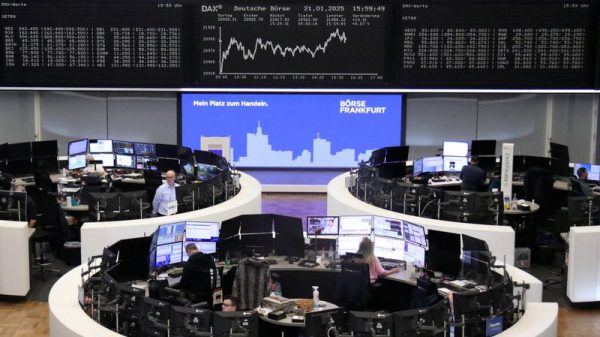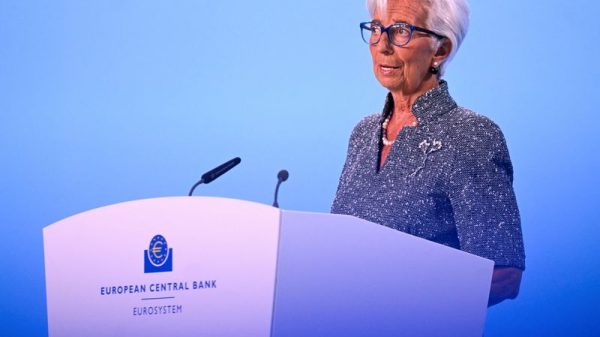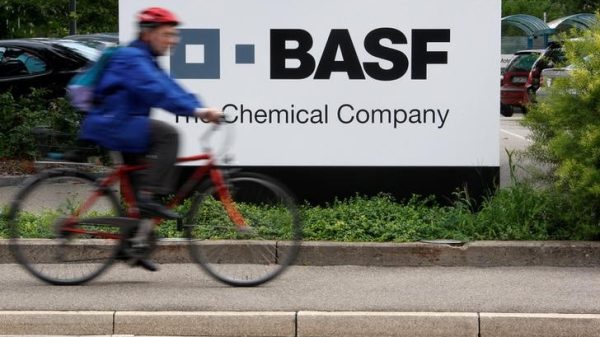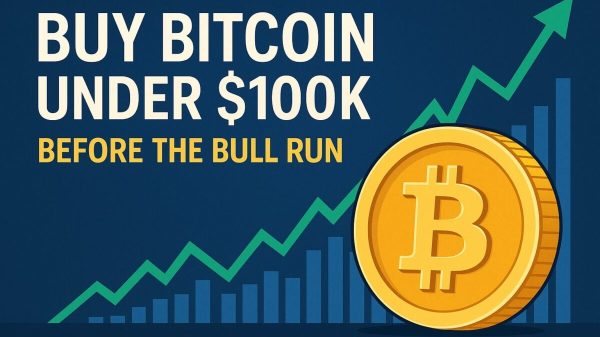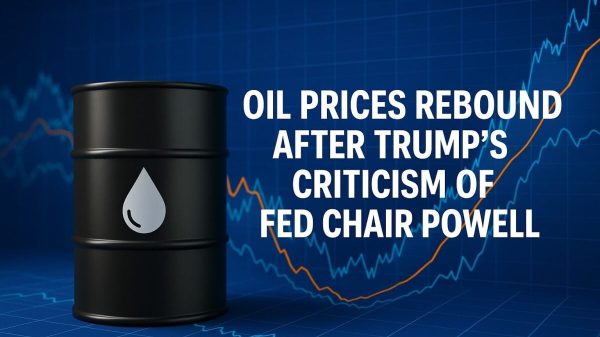Great Southern Bank (GSBC) reported earnings of $1.41 per diluted share for the third quarter of 2024, totaling $16.5 million in net income. This represents an increase from $1.33 per share in the same quarter last year, despite challenging economic conditions.
Key Takeaways:
• Net income reached $16.5 million, or $1.41 per diluted share
• Assets surpassed $6 billion
• Net interest income rose 2.6% to $48 million
• Nonperforming assets decreased to 0.13% of total assets
• Quarterly dividend of $0.40 per share declared
Company Outlook
• Expects effective tax rate to remain around 18.0% to 20.0%
• Focused on managing credit risk and controlling costs
• Navigating competitive deposit environment
• Committed to sustainable long-term value creation
Bearish Highlights
• Non-interest income decreased by $860,000 from Q3 2023
• Lower overdraft fees and debit card income, consistent with industry trends
• Construction and commercial loans saw declines
Bullish Highlights
• Net interest margin remained stable at 3.42%
• Moderate loan growth of $121.7 million for the year
• Gains on loan sales rose by $292,000
• Efficiency ratio improved to 61.34% from 65.13% year-over-year
• Book value per share increased to over $52
Misses
• Earnings per share slightly lower than Q2 2024 ($1.41 vs $1.45)
• Elevated deposit costs impacting profitability
Q&A Highlights
• No specific guidance on loan growth provided
• Approximately 3,000 shares repurchased in Q3
• No immediate plans for new loan production offices
• Cautious approach towards mergers and acquisitions
Great Southern Bank reported solid financial results for the third quarter of 2024, despite facing challenging economic conditions. The bank’s net income reached $16.5 million, translating to earnings of $1.41 per diluted share, up from $1.33 per share in the same quarter last year.
The bank’s assets surpassed $6 billion, with a return on average assets at 1.11% and return on average equity at 11.1%. Net interest income saw a 2.6% increase to $48 million, while the net interest margin held steady at 3.42%. Despite elevated deposit costs, Great Southern Bank managed to achieve moderate loan growth of $121.7 million for the year, primarily driven by residential loans.
Joseph Turner, CEO of Great Southern Bank, noted during the earnings call that the company does not provide specific guidance on loan growth due to various uncontrollable factors. However, he suggested that past growth over the first nine months could serve as a projection for year-end performance.
The bank’s financial health was further underscored by a decrease in nonperforming assets to $7.7 million, or 0.13% of total assets. Great Southern Bank’s strong capital position led to a tangible common equity ratio of 10%, with stockholders’ equity increasing by $40.3 million since December 31, 2023.
In terms of capital management, the bank repurchased 2,971 shares at an average price of $53.04 and declared a quarterly dividend of $0.40 per share. Turner mentioned plans to strengthen the bank’s capital position ahead of a sub debt repricing in June.
While non-interest income saw a decrease of $860,000 from Q3 2023, primarily due to lower overdraft fees and debit card income, gains on loan sales rose by $292,000. Non-interest expenses totaled $33.7 million, down $1.8 million from the previous year, contributing to an improved efficiency ratio of 61.34%.
Looking ahead, Great Southern Bank remains focused on managing credit risk and controlling costs while navigating a competitive deposit environment. The bank expects its effective tax rate to remain around 18.0% to 20.0% due to additional investment tax credits.
Turner expressed a cautious approach towards mergers and acquisitions, emphasizing the challenges of maintaining revenue post-acquisition. The management reaffirmed its commitment to sustainable long-term value creation through disciplined financial management and strategic capital deployment.
InvestingPro Insights
Great Southern Bank’s (GSBC) recent financial performance, as reported in their Q3 2024 earnings, aligns with several key metrics and insights from InvestingPro. The company’s P/E ratio of 11.49 suggests that the stock is trading at a relatively modest valuation compared to earnings, which could be attractive to value-oriented investors given the bank’s solid performance.
InvestingPro data shows that GSBC has a market capitalization of $677.96 million, positioning it as a smaller player in the banking sector. This size allows for potentially more agile operations, as evidenced by the bank’s ability to maintain a stable net interest margin of 3.42% despite challenging economic conditions.
One of the InvestingPro Tips highlights that GSBC “Has maintained dividend payments for 35 consecutive years.” This impressive track record of dividend consistency aligns with the company’s recent declaration of a $0.40 per share quarterly dividend, underscoring its commitment to returning value to shareholders. The current dividend yield stands at 2.76%, which may be appealing to income-focused investors.
Another relevant InvestingPro Tip indicates that GSBC is “Profitable over the last twelve months,” which is consistent with the reported earnings of $1.41 per diluted share for Q3 2024. This profitability, coupled with the bank’s improved efficiency ratio of 61.34%, demonstrates management’s ability to control costs effectively.
It’s worth noting that InvestingPro offers additional tips and insights beyond those mentioned here. Investors interested in a more comprehensive analysis of GSBC can explore the full range of tips available through the InvestingPro product.
Full transcript – Great Southern Bancorp Inc (NASDAQ:GSBC) Q3 2024:
Operator: Good day and thank you for standing by. Welcome to the Great Southern Bank Third Quarter 2024 Earnings Conference Call. At this time, all participants are in a listen-only mode. After the speakers’ presentation, there will be a question-and-answer session. [Operator Instructions] Please be advised that today’s conference is being recorded. I would now like to hand the conference over to your speaker today, Zack Mukewa, Investor Relations. Please go ahead.
Zack Mukewa: Thank you. Good afternoon and thank you for joining Great Southern Bank’s Third Quarter 2024 Earnings Call. Today, we will be discussing the company’s results for the quarter ending September 30, 2024. Before we begin, I’d like to remind everyone that during this call, forward-looking statements may be made regarding the company’s future events and financial performance. These statements are subject to various factors that could cause actual results to differ materially from those anticipated or projected. For a list of these factors, please refer to the forward-looking statements disclosure in the third quarter earnings release and other public filings. Joining me today are President and Chief Executive Officer, Joe Turner; and Chief Financial Officer, Rex Copeland. I’ll now hand the call over to Joe.
Joseph Turner: Okay. Thanks, Zack, and good afternoon, everyone. We appreciate you joining us today for our third quarter earnings call. Our financial results reflect solid performance and the continued resilience of our operations despite the challenges in today’s economic environment particularly with fluctuating interest rates and broader macroeconomic pressures. We earned $1.41 per diluted common share or $16.5 million in net income for the third quarter of 2024. This compares to $1.33 per diluted common share last year in the same quarter and $1.45 in the second quarter of 2024. We also surpassed the $6 billion in asset mark during this quarter. These results, I think, demonstrate our ability to maintain solid earnings and a strong balance sheet. Regarding earnings performance, our annualized return on average assets was 1.11% during the quarter, and our annualized return on average equity was 11.1% during the quarter. Net interest income increased by $1.2 million or 2.6% to $48 million compared to $46.7 million in the year-ago quarter. Our net interest margin remained steady at 3.42% compared to 3.43% in the third quarter last year. The continued pressure on our margins is primarily due to elevated deposit costs reflecting the competitive landscape for deposits and higher interest rate environment we’ve been operating in. We have seen some relief from the Fed’s recent rate cut. But I think it’s important to note that changes to our deposit costs will likely take time or this rate cut will likely take time to fully impact our funding costs. As we move forward, we will closely monitor how these rate adjustments influence deposit pricing and loan demand in the broader economy. Though we expect these macroeconomic factors to present challenges, we are well prepared to navigate the current environment by focusing on disciplined asset and liability management. We maintained moderate loan growth during the quarter, up $121.7 million for the year. I think we’re up over $70 million in the quarter. This increase was primarily driven by expansion in our other residential loan segment, which was driven by completion of construction projects that transitioned into the permanent financing category. While we’ve seen some declines in construction and commercial business loans, which is reflective of ongoing economic uncertainties, our pipeline of loan commitments and unfunded lines remains solid at $1.04 billion at the end of September 2024. I think this positions us well to continue supporting our customers and pursuing selective lending opportunities. For more information about our loan portfolio, you can find our quarterly loan portfolio presentation on our Investor Relations site under the presentations link and is also on file with the SEC. From a credit quality perspective, nothing really different than what we’ve said in the past about as good credit quality as we’ve ever had. We actually did make significant strides to even improve at this quarter. Nonperforming assets decreased by $12.7 million, bringing our total nonperforming assets down to $7.7 million or 0.13% of total assets. That’s down from 0.34% at June 30 and 0.20% at December 31, 2023. The decline was largely due to the resolution of two significant nonperforming assets Net charge-offs for the quarter were $1.5 million compared to $99,000 in the same period a year-ago. The provision for credit losses of $1.2 million was recorded in the quarter as a result of the charge-offs and growth in the loan portfolio. One of our charge-offs related to a loan collateralized by an office building in the St. Louis, Missouri, suburb of Clayton, Missouri, which we discussed in previous filings. Our outlook on the broader portfolio, including the office portfolio remains positive, and we continue to view the commercial real estate market as a key area for potential growth, especially as economic conditions stabilize. Our capital position continues to be strong. Stockholders’ equity has increased by $40.3 million since December 31, 2023, bringing our TCE ratio to 10% from 9.7%. This increase reflects both strong earnings and our disciplined approach to capital management. We remain committed to returning capital to shareholders through share repurchases and dividends while growing book value per share. During the quarter, we repurchased 2,971 shares at an average price of $53.04, and we declared a quarterly dividend of $0.40 per share. For the nine months ended September 30, 2024, we’ve repurchased nearly 240,000 shares at an average price of $51.69 and we declared quarterly dividends totaling over the three quarters, $1.20 per common share. These actions align with our long-term strategy of delivering value to our shareholders while maintaining a strong capital base to support future growth. As far as the economic environment, the economic environment remains complex with inflationary pressures easing but still above target, impacting consumer behavior and deposit growth. Recent interest rate cuts by the Federal Reserve are expected to provide some relief on deposit costs, though the full benefits may take time to materialize. Competition for deposits, I think, has softened slightly. And while loan demand remained stable, we are closely monitoring credit quality as economic uncertainty continues. We remain focused on prudent risk management and disciplined capital allocation as we navigate these conditions. To wrap up, I’d like to thank our team for their continued dedication and our customers for their ongoing trust in Great Southern. Despite the current challenges, we remain confident in executing our long-term strategy, managing risk prudently and delivering value to our shareholders. I’m confident that as we move through the remainder of the year, we are well positioned to build on the momentum we’ve achieved and continue delivering strong, consistent results. That concludes my prepared remarks. I’ll turn the call over to our CFO, Rex Copeland at this time.
Rex Copeland: All right. Thank you, Joe, and good afternoon, everyone. I’ll reiterate some of our financial results for the third quarter of 2024 and also provide more detail on performance and operational metrics. As mentioned before, net interest income for the third quarter of 2024 was $48 million, up $1.2 million or 2.6% from the same period last year. This increase was driven primarily by higher loan yields, which rose by 52 basis points year-over-year and increased average interest-earning assets. The total interest earned on loans and investment securities improved during the quarter offsetting the continued upward pressure on our deposit costs due to higher rates and changes in deposit mix compared to the prior year period. Our net interest margin, as mentioned, remained stable at 3.42%. That was compared to 3.43% in both the second quarter of 2024 and the third quarter of 2023. The stability of our margin despite the challenging deposit rate environment reflects our disciplined approach to balance sheet management, and proactive steps to manage the cost of funds. However, we continue to feel the impact of higher rates on interest-bearing liabilities with a 34 basis point increase in interest-bearing demand deposit costs compared to the third quarter of 2023. The time deposit costs also increased by 65 basis points compared to the prior year quarter. Year-to-date, net interest income totaled $139.6 million down from $148.1 million in the same period in 2023. This reflects the gradual compression in margins across the year as deposit and other funding costs rose faster than asset yields in the second half of 2023 and the first half of 2024. We anticipate this trend to moderate slightly as the Federal Reserve’s recent rate cuts take effect, although the full impact will be felt over time. We have noted that since the Fed funds rate cut last month, our daily net interest income and margins so far have not been negatively affected. Turning now to deposits. Our total deposits at the end of September 2024 were $4.7 billion, up from the previous quarter. The growth was primarily in brokered deposits and interest-bearing demand deposits which helped offset some of the decrease in retail time deposit accounts. During the quarter, we renewed several large time deposits at rates that remain high, although we are seeing signs of stabilization in recent months. And $300 million of our brokered deposits are floating rate tied to the effective Fed funds. So those funding rates increase or decrease in line with changes to the Fed funds rate. Looking forward, we have $537 million in time deposits maturing within the next three months with an average rate of 4.53%. As market rates have decreased after the Federal Reserve rate cut, we expect to replace those deposits at lower rates, possibly between 3.50% and 4.20%. Our liquidity position remains robust with cash and equivalents of $208.4 million and access to additional funding lines through the Federal Home Loan Bank and the Federal Reserve totaling $1.42 billion. We are well prepared to meet both current and future funding needs. From the liquidity perspective, we are in a strong position with available secured funding lines through the Home Loan Bank and Fed, as mentioned. We also – in total all those with – including our on-balance sheet liquidity would equal about $2 billion as of September 30. Our deposit base remains diverse by customer type and geography, and uninsured deposits account for roughly 14% of total deposits, excluding internal subsidiary accounts. While deposit costs remain elevated, the pace of these increases has moderated compared to earlier in the year. We expect this trend to continue as market conditions evolve, particularly with the recent shift in the interest rate environment. Non-interest income for the third quarter was $7.0 million, down $860,000 from the same period in 2023. The decline was largely due to reduced overdraft and insufficient fund fees which reflect the broader industry trend of customers choosing to forego authorizing payments of certain items, which exceed their account balances, resulting in fewer overdrafts in checking accounts and related fees. We also saw a drop in debit card fee income. On the positive side, gains on loan sales were up by about $292,000 compared to last year’s quarter, reflecting higher premiums on single-family mortgage loans, which we’ve originated for sale. On non-interest expense, that total was $33.7 million down $1.8 million compared to the prior year quarter. The decrease was mainly due to lower professional fees and gains from selling foreclosed assets. Legal audit and other professional fees decreased $1.0 million from the prior year quarter as costs related to the proposed core systems conversion are no longer being incurred. We realized $459,000 in gains from selling foreclosed assets during the quarter compared to just $22,000 in gains in the same quarter last year. We also did experience, though, on the other side, an increase in occupancy expense of about $409,000, primarily due to technology-related costs as we continue to invest in our digital infrastructure and online security. Our efficiency ratio improved during the quarter, coming in at 61.34%, down from 65.13% in Q3 2023. This improvement reflects our continued efforts to manage expenses while investing in key business areas. For the three months ended September 30, 2024 and 2023, the company’s effective tax rate was 18.0% and 21.5%, respectively. These effective rates were near or below the statutory federal rate of 21%, primarily due to the utilization of certain investment tax credits and the company’s tax-exempt investments and tax-exempt loans, which reduced the company’s effective tax rate. The company’s current effective tax rate, both combined federal and state is expected to be approximately 18.0% to 20.0% in future periods, primarily due to the additional investment tax credits being utilized beginning in 2024. Finally, talk a little bit about capital again. We ended the quarter with stockholders’ equity of $612.1 million, an increase of $40.3 million since the end of 2023. This brings our tangible common equity ratio to 10.0%, up from 9.7% at the end of 2023. We’re also pleased to report a strong increase in our book value per share which rose to over $52 up from about $49 in the previous quarter and $44.81 in the third quarter of last year. This increase in book value resulted from both increased retained earnings and improvement in unrealized losses on our available-for-sale investment portfolio and interest rate swaps. This growth underscores our commitment to enhancing shareholder value through both earnings performance and disciplined capital management. Despite the challenges posed by the competitive deposit environment and higher funding costs, we have continued to deliver solid financial results. Our focus on managing credit risk, controlling costs and maintaining strong capital levels has positioned us well as we navigate the remainder of this year. As we move forward, we remain committed to generating sustainable long-term value for our shareholders through prudent financial management and strategic capital deployment. That concludes my remarks for today, and we’re now ready to take any questions we may have.
Operator: [Operator Instructions] Our first question comes from Andrew Liesch with Piper Sandler. Your line is open.
Andrew Liesch: Hey, everyone. Good afternoon.
Joseph Turner: Hi, Andrew.
Andrew Liesch: I just wanted to touch on the margin here. So it sounds like you’re getting some stabilization on the funding side. And I know in the past, maybe it’s taken a quarter or two for rate changes that flow through to your margin. But the tone sounds like NII and the margin are pretty stable since the rate cuts? Or do you think there’s an opportunity for expansion here in the fourth quarter? Or do you think we got to wait until 2025 for that?
Rex Copeland: I think we worked pretty hard throughout the year to try to get our maybe a little bit asset-sensitive position moderated to being more neutral. We looked at what we knew we had as far as variable rate loans that would reprice with cuts. And we have on our – on the other side of the balance sheet, we’ve got quite a bit of – we have some interest rate swaps. We’ve got some, as I mentioned, some floating rate broker deposits, and we’ve got some short-term home loan bank advances overnight advances, and that kind of thing. In addition to that, we’ve got some shorter maturing brokered deposits. And as I mentioned, a little over $500 million of combined retail and brokered CDs that will mature in the next three months. And so we feel like we’ve gotten things sort of matched off there, Andrew, more than we had before. I don’t know that we’re going to say we’re going to get to a point where we can reprice the liabilities faster than the assets by much. So I think fairly neutral is kind of how we see it in the near term at least.
Andrew Liesch: Got it. That’s very helpful. On the expense front, it’s kind of add back the gains that you had on the foreclosed assets and then take up some of the other one-timers in the prior quarter, it looks like expenses were down by about $1 million to $34.25 million. Is that a good run rate going forward? Or do you think maybe they rise a little bit from there? This seems a little bit low to me.
Rex Copeland: Yes. I mean it was lower probably than what the expectations were. For sure, the cost that we have been incurring in previous quarters related to the proposed system conversion. That was about $900,000 or so a quarter, and those are not in there and shouldn’t be going forward. We probably had – I mean we – in other categories we might have had $200,000 or $300,000 of other kind of good news kind of things that happened in the quarter. They were all pretty small individually. I mean, not to give total guidance, but I think that we were pretty much on the low side on expenses in Q3 probably.
Andrew Liesch: Got it. Very helpful. Thanks for taking the questions. I’ll step back.
Operator: Thank you. [Operator Instructions] Our next question comes from Damon DelMonte with KBW. Your line is open.
Damon DelMonte: Hey. Good afternoon, guys. Hope you’re all doing well today.
Joseph Turner: Hi, Damon.
Damon DelMonte: Good afternoon. The first question, just regarding credit, nice to see the cleanup of couple of credits and you’re down to NPAs of, call it, 16 basis points of loans in OREO. How do we think about the reserve at this point? There was some release this quarter, but that was probably tied directly to those couple of loans that you moved off the books. Do you feel like kind of a reserve in the mid-130s is good? Or do you feel like you still have adequate excess reserves there that could kind of bleed out over the coming quarters?
Joseph Turner: I mean I feel like the ratios we’re looking at are pretty good ratios for us. I wouldn’t expect to see a lot of bleed out over the coming quarters.
Rex Copeland: And some of it will also depend on the level of loan growth that we have as well because we’ve got a reserve – if we grow, we’ve got to reserve for that upfront as it happens. So I – like Joe, I think our reserve ratio has been fairly consistent and probably going to remain somewhat in that area.
Damon DelMonte: Okay. Great. And that kind of ties into the next question there about loan growth that you just mentioned there. The last couple of quarters where I think this quarter was 6.5%, maybe 4% linked quarter annualized in the second quarter. The year started off kind of slow. Do you think that you finished the year kind of in the range of what we saw the last couple of quarters based on your pipelines? Or do you think you just had some pent-up demand that kind of hit the books in the middle part of the year, and it’s going to kind of be a minimal growth here to end the year?
Joseph Turner: Again, we don’t give guidance as to what loan growth for is going to be just because a lot of it is beyond our control. We don’t completely – we have a projection of what payoffs are going to be, but they can always surprise you a little bit Damon. I mean, I think probably something that if you just look at the nine months and kind of look at how we’ve grown thus far, that would probably be the best projection of what we might do to end up the year.
Damon DelMonte: Got it. Okay. That’s helpful. That’s all that I had. Thank you.
Joseph Turner: Okay. Thanks, Damon.
Operator: Thank you. And our next question comes from John Rodis with Janney. Your line is now open.
John Rodis: Hey guys, good afternoon.
Joseph Turner: Hi, John.
John Rodis: Joe, a question, I guess, on the buyback. You only bought back roughly 3,000 shares this quarter. Was that more a function of price? Or I mean, capital continues…
Joseph Turner: Yes. I mean, I think the price for the most part this quarter was a little higher. So I think that’s probably it – although our book value now has moved up. And so there may be opportunity to buyback more here as we go forward.
John Rodis: Good problems to have though.
Rex Copeland: Yes. We also thought it made some sense to take the opportunity to build up our capital a little bit to just have a little stronger capital position, right?
John Rodis: Okay. That makes sense, Rex.
Joseph Turner: And we do – as we mentioned, we have the sub debt that’s repricing in June, and we’re going to be in a cash position to just pay that off if we want to. So kind of like we said last quarter, John, we’ve got good uses for capital in lots of areas in lots of ways.
John Rodis: Joe, maybe just sort of big picture, your thoughts, any new markets that could be on the horizon for loan offices or your thoughts on M&A in the current environment? You guys obviously haven’t done anything in a while?
Joseph Turner: Yes. I mean, as far as loan production offices, we don’t have anything necessarily on the drawing board. But we’re – our guys are in contact with banks and good lenders kind of across the country. And so if we saw a situation that made sense in a market that we were interested in, we could do that very fairly easily. M&A, we’re just not big open bank M&A people. I mean we see the struggles in when banks buy other banks maintaining the revenue producers, and it seems like you sort of wind up competing to keep the business that you pay for. And so never say never if the right situation came up, we would be interested, but we’re going to be pretty selective about it, I would say.
John Rodis: Okay. That makes sense, Joe. I hear you. So thanks guys.
Joseph Turner: All right. Thanks, John.
Operator: Thank you. I’m showing no further questions at this time. I would now like to turn it back to Joe Turner, Chief Executive Officer, for closing remarks.
Joseph Turner: All right. Well, thanks, everybody, for joining our call today, and we look forward to talking to you after the end of the year. Thank you.
Operator: This concludes today’s conference call. Thank you for participating. You may now disconnect.
This article was generated with the support of AI and reviewed by an editor. For more information see our T&C.




